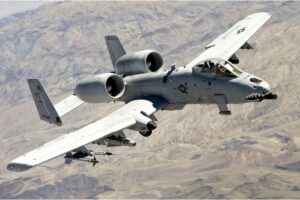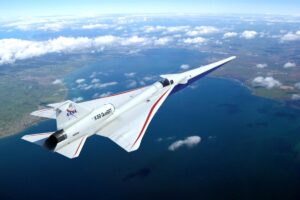Bridging Protocols ARINC-429 to 1553 Converters
Executive Summary
Modern aerospace platforms are an amalgamation of advanced systems that often rely on different communication standards. Two of the most widely used protocols—ARINC-429 and MIL-STD-1553—form the communication backbone for commercial and military avionics, respectively. Although each was developed with different goals and operational environments in mind, there is a growing need for ARINC-429 to 1553 protocol converters to allow seamless interoperability between these systems.
This white paper explores the fundamentals of both protocols, the technical complexities of bridging them, use cases across aerospace sectors, and how modern converter technologies enable reliable communication between legacy and modern systems.
Chapter 1: Introduction to Protocol Diversity in Aerospace
1.1 The Rise of Avionics Protocols
In aviation, interoperability is critical. Over the past five decades, avionics systems evolved independently across the commercial and military sectors. This led to the development of two highly trusted protocols:
-
ARINC-429, optimized for commercial airline systems
-
MIL-STD-1553, designed for rugged military applications
With increasing convergence in defense and commercial operations, and the growing use of multi-role aircraft, the need to bridge these protocols has become urgent.
1.2 Protocol Incompatibility: A Practical Challenge
These two protocols are not naturally interoperable:
-
ARINC-429 is a unidirectional, point-to-point protocol.
-
MIL-STD-1553 is a command/response, dual-redundant bus system.
Without a specialized hardware or software interface, data exchange is impossible. This technical barrier makes protocol converters an indispensable tool in modern avionics integration.
Chapter 2: Overview of ARINC-429
2.1 Background
Developed in the 1970s by Aeronautical Radio, Inc., ARINC-429 remains the standard data bus for commercial aircraft. It is used in systems including flight management, navigation, display controls, and environmental sensors.
2.2 Key Features
-
Unidirectional communication (Simplex)
-
High integrity, low-bandwidth transmission
-
Twisted-pair shielded cables
-
Message structure: 32-bit word format with label, SDI, data, SSM, and parity
2.3 Limitations
While reliable, ARINC-429 has notable constraints:
-
No built-in addressing or handshaking
-
One transmitter to many receivers, but no bus arbitration
-
Limited scalability and adaptability
These characteristics make it unsuitable for highly dynamic environments like combat systems, where MIL-STD-1553 excels.
Chapter 3: Overview of MIL-STD-1553
3.1 Background
Introduced by the U.S. Air Force, MIL-STD-1553 defines a deterministic and fault-tolerant data bus for military-grade systems. It is widely used in aircraft, spacecraft, and naval platforms.
3.2 Key Features
-
Dual-redundant bus architecture
-
Command/response protocol
-
100% message control by the bus controller
-
Transformer coupling for electrical isolation
-
1 Mbps transmission speed
3.3 Advantages and Applications
MIL-STD-1553 is designed for:
-
High-reliability communications
-
Deterministic message timing
-
Resistance to EMI, shock, and environmental stresses
It is integral to mission computers, weapon systems, and fly-by-wire control.
Chapter 4: Why Convert Between ARINC-429 and MIL-STD-1553?
4.1 Integration of Commercial and Military Avionics
With many aircraft adopting dual-use roles or undergoing modernization, integrating commercial ARINC-429 systems with military-grade MIL-STD-1553 subsystems has become essential.
4.2 System Modernization
ARINC-429-based legacy components, such as autopilot or flight display units, must often be preserved while introducing new military systems. Converters allow seamless integration without rewriting software or redesigning electronics.
4.3 Test and Simulation
Flight testing facilities may require ARINC-based tools to communicate with 1553-based avionics, especially in multi-aircraft, cross-platform scenarios.
Chapter 5: Technical Challenges in Bridging the Protocols
5.1 Directionality
ARINC-429 is simplex; MIL-STD-1553 is full duplex. The converter must intelligently emulate response behavior and buffer transmissions accordingly.
5.2 Data Format Translation
ARINC-429 uses 32-bit data words with fixed field locations. MIL-STD-1553 uses command words with subaddresses and data blocks. Converters must:
-
Map labels to subaddresses
-
Adjust word lengths
-
Apply parity and checksums
5.3 Timing and Synchronization
MIL-STD-1553 operates under tight timing constraints. Real-time behavior must be replicated during conversion, including message latency and bus arbitration rules.
5.4 Message Prioritization
MIL-STD-1553 allows message prioritization and command-based control. ARINC-429 has no prioritization. This mismatch must be managed with scheduling or buffering logic within the converter.
Chapter 6: Converter Architecture and Components
6.1 Hardware Design
Typical ARINC-429 to 1553 converters include:
-
Dual ARINC-429 receivers and a single transmitter
-
MIL-STD-1553 transceivers with transformer coupling
-
FPGA or microcontroller for logic control
-
Onboard memory for buffering
-
EMI shielding and military-grade connectors
6.2 Firmware Functionality
The embedded firmware performs:
-
Message parsing
-
Timing emulation
-
Field mapping
-
Logging and diagnostics
-
Protocol emulation (e.g., Bus Controller or Remote Terminal mode)
6.3 Configuration Interfaces
Advanced converters offer configuration software for:
-
Setting label-subaddress mappings
-
Adjusting timing and sync options
-
Diagnostics, logging, and health monitoring
Chapter 7: Use Cases and Deployment Scenarios
7.1 Military Aircraft Avionics Upgrade
An air force retrofitting a C-130 transport needed to preserve ARINC-429-based flight deck displays while adding a new MIL-STD-1553 mission system. A converter provided a seamless bridge, avoiding costly rewiring.
7.2 Commercial Aircraft in Military Leasing
When commercial airliners are leased for military transport, mission pods and sensors often use 1553. Converters make it possible to integrate them with the aircraft’s ARINC-based avionics.
7.3 Ground Testing of Integrated Systems
System integration labs require real-time testing between legacy ARINC units and 1553-controlled simulators. Converters allow full closed-loop simulations without recoding applications.
7.4 Space Systems
Some satellite payloads output telemetry in ARINC-429 format, while the main bus uses MIL-STD-1553. A converter enables compatibility without payload redesign.
Chapter 8: Certification and Compliance
8.1 Environmental and Power Standards
Converters are built to meet:
-
MIL-STD-810 (environmental testing)
-
MIL-STD-704 (power conditioning)
-
MIL-STD-461 (EMC/EMI)
8.2 Software and Firmware Compliance
In safety-critical systems, converters must support:
-
DO-178C (software verification)
-
DO-254 (hardware lifecycle assurance)
-
NATO STANAG protocols
Documentation and traceability are required for aviation authorities and military programs.
Chapter 9: Market Options and Vendors
9.1 Leading Converter Vendors
Manufacturers specializing in ARINC-429 to 1553 converters include:
-
Data Device Corporation (DDC)
-
Alta Data Technologies
-
AIM GmbH
-
Curtiss-Wright Defense Solutions
-
Excalibur Systems
9.2 COTS vs Custom
While Commercial Off-The-Shelf (COTS) converters serve most needs, mission-specific deployments may require:
-
Custom label-subaddress mapping
-
Miniaturized enclosures for constrained installations
-
Radiation-hardened components for space use
Chapter 10: Deployment Best Practices
10.1 Define System Requirements
Before selecting a converter:
-
Identify transmitting and receiving systems
-
Analyze protocol details (label, message rate, subaddress)
-
Confirm power, space, and interface constraints
10.2 Perform Validation Testing
Use loopback testing, timing validation, and fault injection to ensure converter reliability in all operational scenarios.
10.3 Plan for Future Expansion
Choose converters with:
-
Firmware update capabilities
-
Multiple channel support
-
Support for both Bus Controller and Remote Terminal emulation
Chapter 11: Benefits of ARINC-429 to 1553 Converters
11.1 Cost Efficiency
Converters allow systems to interoperate without replacing avionics or re-architecting the platform.
11.2 Increased Flexibility
Support legacy and modern systems side-by-side without compatibility issues.
11.3 Faster Development Cycles
Accelerate prototyping, simulation, and system integration testing using configurable, off-the-shelf solutions.
11.4 Modular System Design
Enable modularity aligned with open architecture principles like MOSA and FACE (Future Airborne Capability Environment).
Chapter 12: Future Trends in Protocol Conversion
12.1 Cyber-Resilient Converters
Next-gen converters will include:
-
Secure boot and encrypted firmware
-
Tamper detection
-
Real-time threat monitoring for embedded communications
12.2 Smart Converters with AI Capabilities
Using machine learning for predictive diagnostics, anomaly detection, and dynamic message prioritization.
12.3 Unified Protocol Bridges
Products offering multi-protocol conversion (e.g., ARINC-429 ↔ 1553 ↔ Ethernet ↔ CAN) in a single unit for more versatile platforms.
Conclusion
As aerospace platforms evolve, the need for robust and reliable communication across diverse protocols becomes more critical. ARINC-429 to 1553 converters serve as the linchpin for integrating commercial and military avionics, preserving system functionality, reducing costs, and enabling innovation.
Whether in mission systems, simulators, test environments, or airborne payloads, these converters ensure seamless data translation, system stability, and future-readiness. For engineers and program managers navigating modernization or integration projects, ARINC-429 to 1553 protocol converters are indispensable tools—bridging decades of aerospace advancement with the demands of today and tomorrow.





